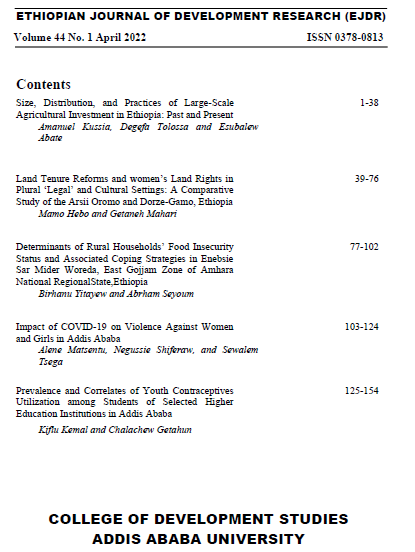Determinants of Rural Households’ Food Insecurity Status and Associated Coping Strategies in Enebsie Sar Mider Woreda, East Gojjam Zone of Amhara National Regional State, Ethiopia
DOI:
https://doi.org/10.20372/ejdr.v44i1.4397Keywords:
food insecurity, coping strategies, households, rural EthiopiaAbstract
This cross-sectional study aims at identifying the determinants of rural
households’ food insecurity status and associated coping strategies in Enebsie
Sar Mider Woreda. Both probability and non-probability sampling procedures
were used to draw the 351 sample households. Food security index was
constructed by Consolidated Approach for Reporting Indicators (CARI)
console model with four food insecurity indictors i.e., food consumption score,
food energy shortfall, food expenditure share and livelihood asset depletion.
The determinants of household food insecurity were analyzed using ordered
logistic regression model with maximum likelihood estimation method. The
result shows that only 0.3% were food secure, 35.3% were marginally food
secure, 51% were moderately food insecure and the remaining 13.4% were
severely food insecure. The regression result shows that household size, aid and
being female household head had significant and positive association with
household food insecurity status while farm income, rainfall shock, livestock
ownership, educational status of household heads, uses of farm inputs, credit
access, oxen ownership, and farmland size had significant and inverse
association with food insecurity status of rural households in the study area. To
check the severity of food insecurity, households coping experiences were
analyzed and most of the sample households were found to practice crises and
emergency coping strategies. The study concludes that the problem of food
insecurity is pervasive in the study area and recommends provision of family
planning, adult education and tailored training for farmers, better access to
credit, affordable farm input and appropriate livestock package such as
livestock insurance.

